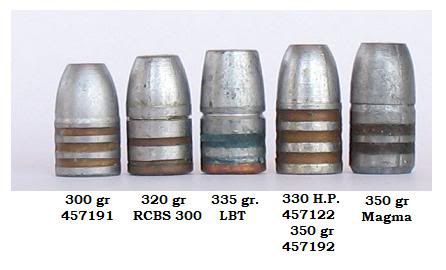Slim,
"What size groups at 50 yards are you shooting with that Trapper?"
The majority of the shots (all but three out of the total) were inside a 4" vertical by 2.5" horizontal area. I planned to bring the aiming square home and measure it on Greg Mushials Target Tool on RCBS Load. The aim spot was pretty shot up. I drove off and forgot it due to all the talking... I was using a 6" wide by 8" tall black aiming square of construction paper. 6" wide is just about right for my eyes at fifty yards (my preffered chronograph distance). Using a six o'clock hold the blade front sight is just about the same width to my eyes.
By resting my right hand in the hollow on the front bag and grasping the forend I have a good steady hold. The rifle will sometimes get away from this hand as due to a previous injury (broken wrist) I dont have as good a grip with my right hand as I desire. With my left elbow on a small bag, the toe of the butt on another bag and pulling the butt into my strap-on shoulder pad I have a pretty solid hold.
There is a lot of muzzle rise in recoil with these heavy bullets and I could have a little better bench technique. I am using the issue rear sight and if the rifle were mine I would install a Marbles flat top folding rear sight for a better sight picture.
I believe better sights would help a lot but the big factor is managing the recoil for each shot the same way.
"Question 2: Why are you guys stopping at 20 grains of 296? Isn't it possible to go beyond 1500 fps with 457122 in a .45 Colt carbine/rifle?"
I have no idea how fast these big bullets can be pushed in the 16" barrel. To be truthful I was just following yours and John Kort's lead!

The bullet weighs over 380 grains (with my soft lead) so I am assuming we are running 29,000 CUP or so. There is some published .45 Colt load data that has been pressure tested at over 30,000 CUP, so I am assuming we could go a little faster. Adding a grain or two of powder would increase the COAL (with the bullet seated hard on the powder column) and keep the base of the bullet above the cannalure on the Winchester brass - a good thing.
If DZTRAM is back on line and lurking he may be able to add a little here as he shoots the .454 Cassul in a Rossi. I think there are others on this Forum who are also members of the Yahoo Groups - 454 and 2guntommy. These two groups have a pretty active core group who are shooting warm .45 Colt and .454 Cassul in the short rifle. They may have comments on the potential of the Colt cartridge in the short rifle.
If I go any higher I will have to harden my bullets by either water quenching or oven heat treating. My bullets are so soft they problably are being pushed around a lot as they enter the rifling. This can cause them to slug up in the throat and raise pressure. I have experienced no leading with my loads so the throat is sealed for sure. While these loads are warm I have no reason to believe they are maximum.
Edit] MC, I ment to ask if you had seen my post on the other thread about heavy bullets in the 26" .30-30? We are getting some very good results with bullets up 220 grains in the Winchesters. I have some pictures to post that I think you will find interesting.]Edit







